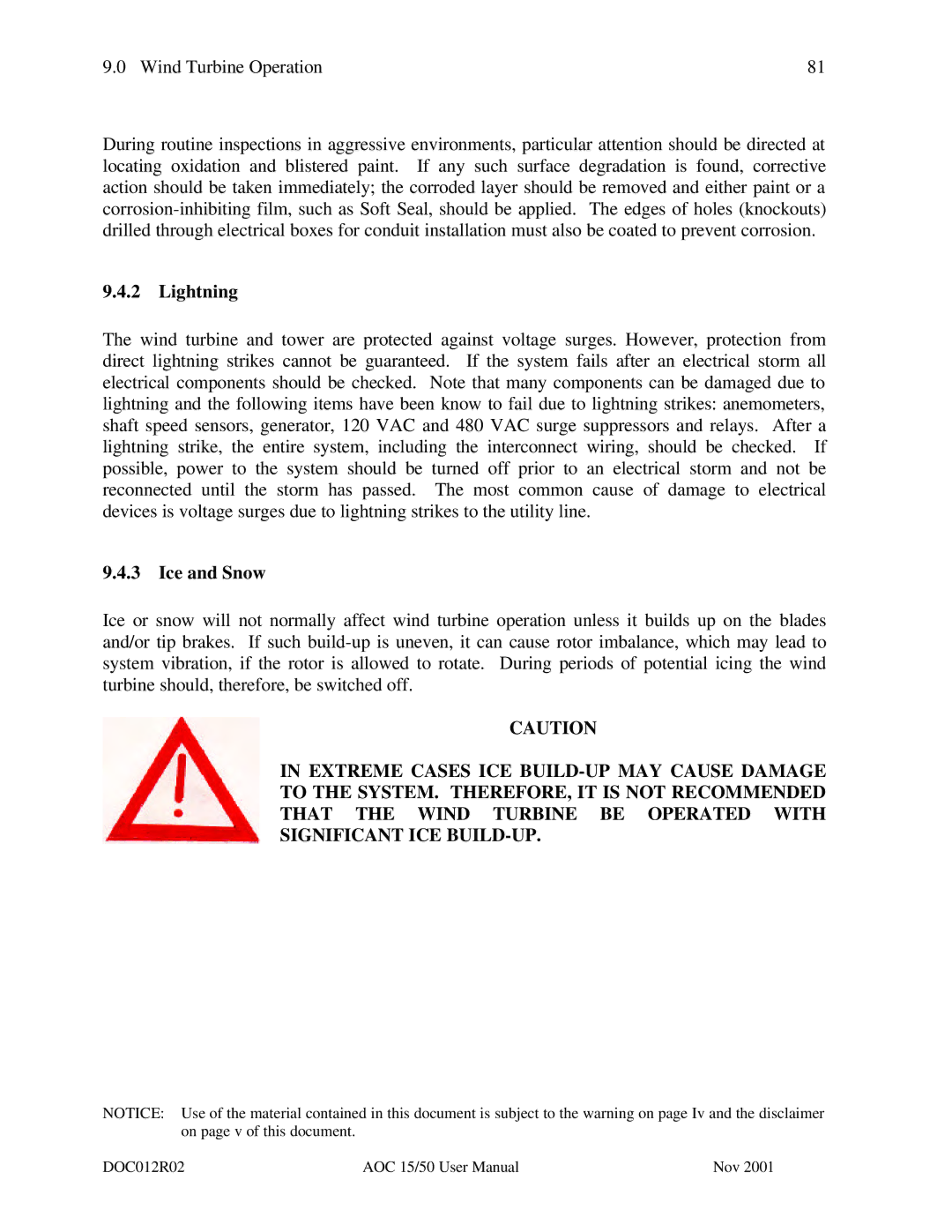
9.0 Wind Turbine Operation | 81 |
During routine inspections in aggressive environments, particular attention should be directed at locating oxidation and blistered paint. If any such surface degradation is found, corrective action should be taken immediately; the corroded layer should be removed and either paint or a
9.4.2 Lightning
The wind turbine and tower are protected against voltage surges. However, protection from direct lightning strikes cannot be guaranteed. If the system fails after an electrical storm all electrical components should be checked. Note that many components can be damaged due to lightning and the following items have been know to fail due to lightning strikes: anemometers, shaft speed sensors, generator, 120 VAC and 480 VAC surge suppressors and relays. After a lightning strike, the entire system, including the interconnect wiring, should be checked. If possible, power to the system should be turned off prior to an electrical storm and not be reconnected until the storm has passed. The most common cause of damage to electrical devices is voltage surges due to lightning strikes to the utility line.
9.4.3 Ice and Snow
Ice or snow will not normally affect wind turbine operation unless it builds up on the blades and/or tip brakes. If such
CAUTION
IN EXTREME CASES ICE
NOTICE: Use of the material contained in this document is subject to the warning on page Iv and the disclaimer on page v of this document.
DOC012R02 | AOC 15/50 User Manual | Nov 2001 |
